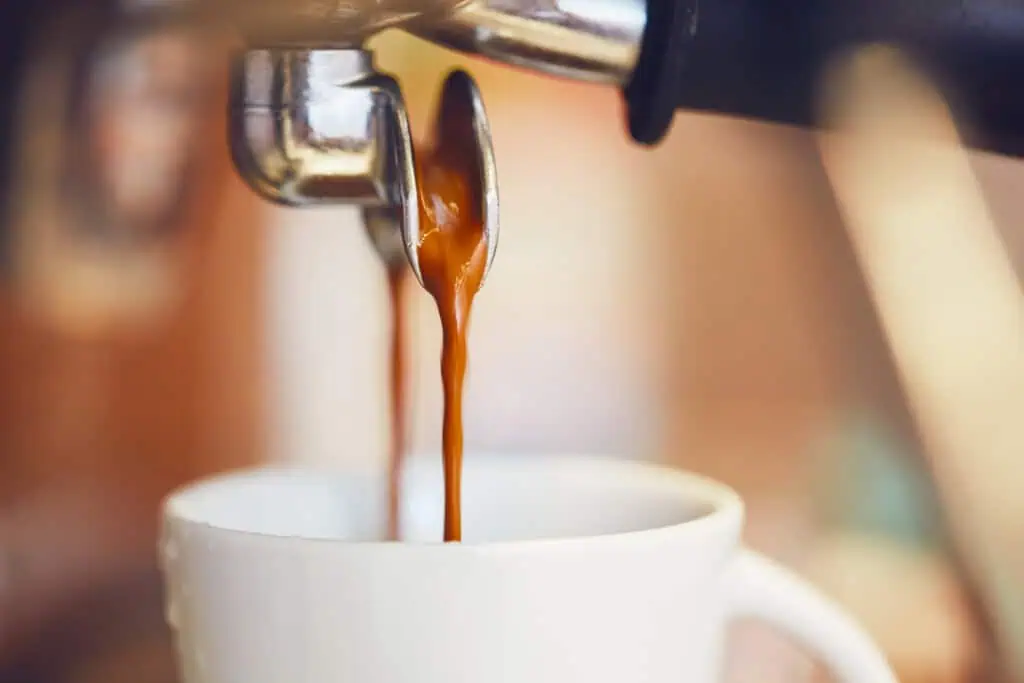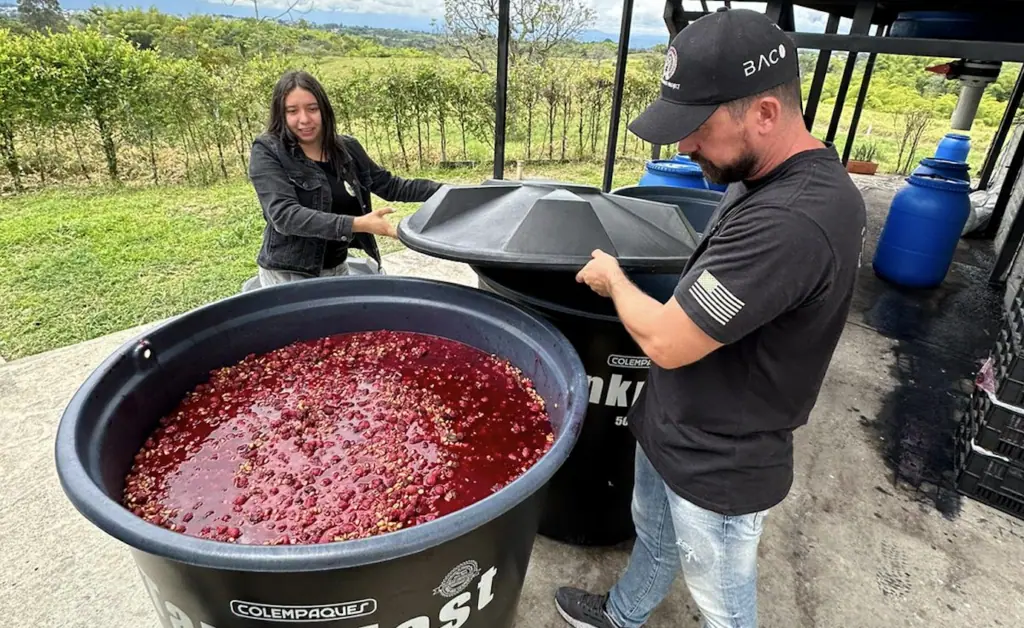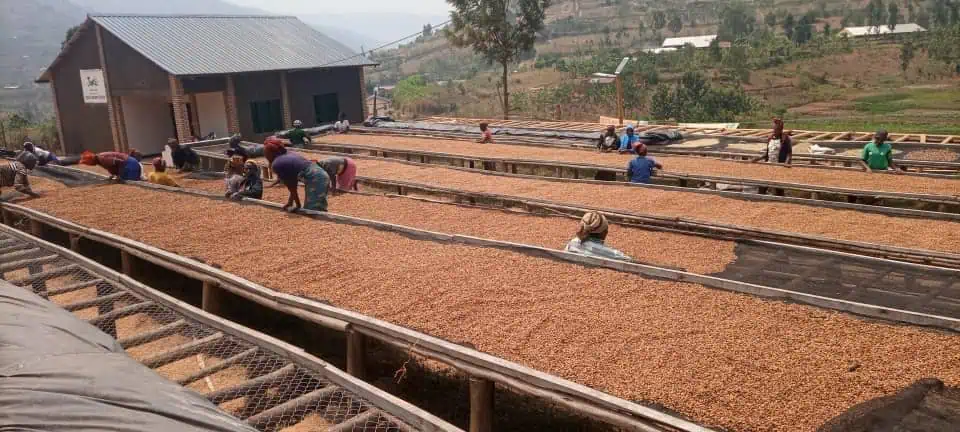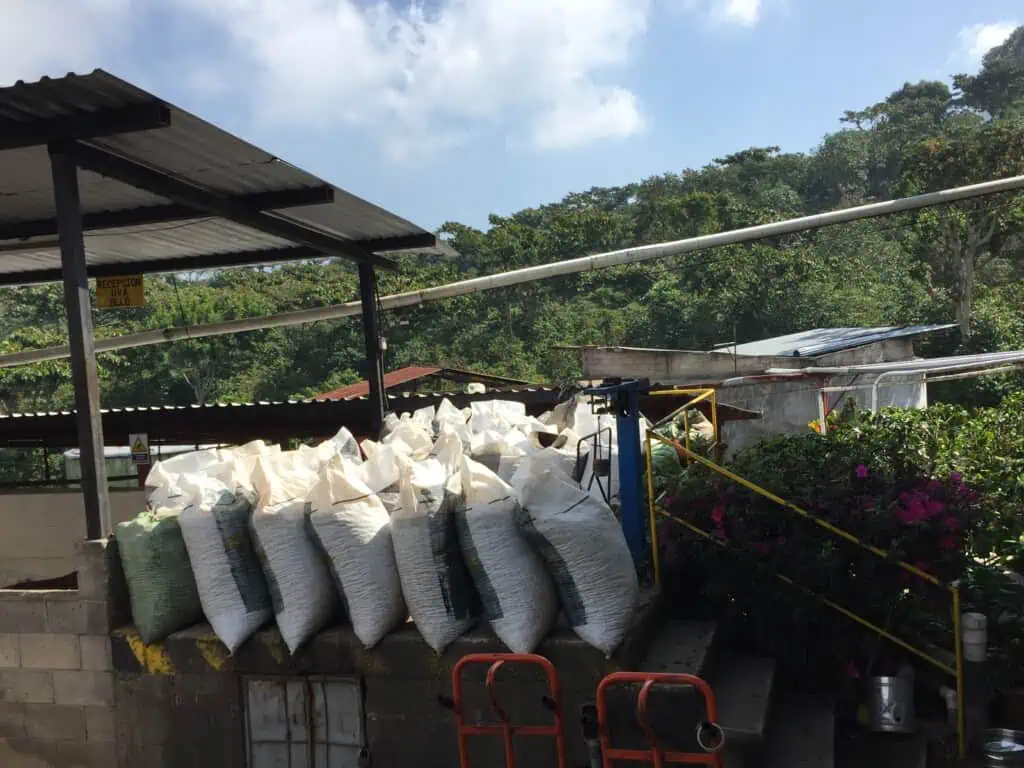
What’s a single-origin espresso? Very typically outlined, it’s an espresso produced from a single crop of espresso grown and processed in a single nation, area, cooperative or farm. In different phrases, it’s not a mix of coffees grown elsewhere or at totally different instances.
Single-origin (S.O.) espressos enable an espresso drinker to discover the broader world of espresso in the identical conscious, knowledgeable means as espresso drinkers who style their coffees brewed as drip or French press. With single-origin espressos, the curious espresso drinker can discover the sensory impacts of variables like tree selection, processing methodology, rising elevation and, to a point, roasting technique — explorations which might be tough to inconceivable to pursue with blends. Plus, single-origins have the capability to shock us, and make the straightforward act of tasting an espresso shot or cappuccino a memorable mini-revelation that tasting a routine mix, even an excellent routine mix, can’t supply us.
Such espresso explorations would appear to be significantly supported by this month’s tasting, as all the 13 top-rated coffees we report on are recognized fairly particularly: by particular farm or co-op, by number of tree that produced them, and infrequently by rising elevation. And we have been capable of inform one thing in regards to the roasting by taking Agtron shade readings of the beans.
Tasting Colleagues
I used to be joined on this blind tasting of single-origin espressos by John DiRuocco, vice chairman of espresso at Mr. Espresso, a long-established (based in 1978) espresso roaster in Oakland, California. The Mr. Espresso motto, fairly justified by its apply, is “Italian inspiration, up to date style.”

Kenneth Davids and John DiRuocco tasting espresso coffees at Mr. Espresso roastery in Oakland. Courtesy Jason Sarley.
We carried out the tasting over a number of days on the lab within the Mr. Espresso roastery, with Brandon Talley, assistant director of espresso high quality at Mr. Espresso, pulling the photographs on a Faema E71E, and Espresso Evaluation’s Jason Sarley in a supervising help function. As typical, we generated the photographs utilizing 18 grams of floor espresso to provide 36 grams of completed espresso, a comparatively commonplace ratio in North American apply. For the “with milk” evaluation, the shot was mixed with three components complete milk, heated however not frothed on the steam wand. As all the time at Espresso Evaluation, the tasting was carried out blind, with Jason delivering the coffees recognized solely by numbers to John and me.
Significance of Processing Technique
When the tasting was completed and the outcomes have been tabulated, it turned out that one variable specifically moved to the entrance of the sensory line: processing methodology. (Processing methodology, readers will recall, describes the sequence of procedures that flip the moist seeds of recent espresso fruit into dry, secure, roaster-ready inexperienced espresso beans.) The dramatic affect of processing strategies involving anaerobic (restricted oxygen) fermentation and its rising variety of variations and purposes tended to upstage the affect of different variables that create variations amongst inexperienced coffees, like tree selection, rising elevation and numerous extra standard processing strategies.

Outdated Soul Espresso’s Pure Course of “Unicorn Lot” drying at Anny Ruth Pimentel’s Finca Loma La Gloria in El Salvador. Courtesy of Jason Griest.
13 of the coffees we examined achieved rankings of 94 or 95, all of which we overview right here. Amongst these top-rated 13 samples, 9, or virtually 70 %, have been processed utilizing strategies that prominently included anaerobic fermentation. Among the many remaining 4 top-rated samples, two have been processed by the traditional moist or washed methodology (all comfortable fruit residue was faraway from the beans earlier than they have been dried), one by the honey or pulped pure methodology (skins have been eliminated, however the fruit flesh or mucilage remained on the beans throughout drying), and one by the pure methodology (the beans have been dried inside your complete fruit).

A stage within the multi-staged fermentation process for Royal Flamingo Espresso’s Colombia Purple Fruits at Edwin Noreña’s Campo Hermosa in Colombia. Courtesy of Royal Flamingo Espresso.
The affect of the anaerobic ferment might be felt within the usually putting sweetness and stunning fragrant complexity amongst all the 9 anaerobic-process samples. Nonetheless, the one pattern that displayed express anaerobic character in its candyish sweetness and perfume-like flowers was the Royal Flamingo Colombia Purple Fruits Campo Hermosa Edwin Noreña (94). John very a lot admired this espresso at 95 and felt it was coherent and full in its originality, with its intense aromatics supported by a sound construction. For me, nonetheless, there was a bit an excessive amount of strawberry gummy and never fairly sufficient espresso, although I managed a 92. However I think many readers will go together with John’s tackle this one. Give this putting espresso a attempt.
John and I switched sides with the quietly melodic, elegant Speckled Ax Ethiopia Dame Dabaye (John 92, Ken 95, web 94), which I discovered pure, poised and flawless. John discovered it a delightful however easy washed Ethiopia espresso. However, once more, attempt it; you will not be blown away, however I strongly doubt you’ll throw any of it away both.
Tree Selection
The celebrated Geisha/Gesha number of Arabica, with its elongated beans, tremendous construction, and intensely floral, cocoa and stone-fruit character, has been one of many most important autos that bold espresso growers have relied on over the previous couple of a long time of their usually profitable makes an attempt to distinguish their inexperienced coffees and entice recognition and better costs for them. Genuine Geishas, significantly these grown from seed of the unique Panama pressure (Geisha T2722), proceed to impress with their grand however balanced construction and intense floral, fruit and cocoa aromatics.

Younger espresso bushes at Edwin Noreña’s Campo Hermosa in Colombia.
However Geishas might not appear as new and totally different as they as soon as did. So making use of anaerobic processing to a espresso from a decent however in any other case unremarkable tree selection is another technique to shock the customer with fragrant fireworks and seductive sweetness. And at decrease costs than is likely to be anticipated for espresso from Geisha bushes, with their usually stingy yields and fussy wants. After all, producers can double down and apply anaerobic processing to their Geishas, as is the case with the Large Shoulders Espresso’s anaerobic pure Marcela Gesha Espressso (95), Euphora Espresso’s anaerobic washed Colombia Buenavista Ataraxia Geisha (94), and AOI Espresso’s Ethiopia Growers Reserve Gesha Village Gaylee Particular Fermentation (94), all of which pursue a particular cup by the use of each distinctive tree selection and anaerobic processing.
Origin and Single-Origin Espressos
Seven of this month’s 13 highest-rated samples have been produced in Colombia, all in southern or south-central Colombia. Of the remaining six, three have been produced in Ethiopia, one in Rwanda, one in El Salvador, and one in Hawaii.
Why the preponderance of Colombias, clearly a preferred origin, however till just lately not the go-to origin for coffees supposed for espresso? (Historically, that will be Brazil.) Primarily as a result of a cluster of farms in southern Colombia seem to have mastered using advanced strategies of anaerobic fermentation, which, carried out skillfully, can remodel a high-grown, probably acidy espresso right into a lower-toned, richly advanced, espresso-friendly espresso.

MK Espresso’s Rwanda Rulindo Purple Bourbon drying within the “honey (fruit flesh) at Juru Espresso in Rwanda. Courtesy of Linking Espresso and Juru Espresso.
True, a few of the different profitable coffees on this month’s tasting used less complicated, extra direct purposes of anaerobic strategies than the Colombia farms. However, all in all, solely two out of this month’s top-rated 13 samples have been processed utilizing legacy strategies historically related to the origins that produced them: The Wonderstate Colombia Sierra Morena Pink Bourbon (95) is a conventional washed-process Colombia, and the Speckled Ax Ethiopia Dame Dabaye (94) a conventional washed Ethiopia. Native tree selection might contribute to the success of MK Espresso’s Juru Rwanda Rulindo Purple Bourbon Honey (94), although the honey processing methodology is atypical for a Rwanda.
Keep tuned, however it seems that the expectation that we are able to make constant associations between espresso origin and occasional cup character continues to erode as bold farmers all around the world tinker with tree selection (e.g., Geisha) and processing methodology.
Roast Shade and Espresso
Historically, Italian apply is to roast for espresso to round what Individuals would possibly name a darkish medium roast. Nonetheless, when a style for espresso drinks and European-style cafés first developed within the U.S. within the Nineteen Eighties, roasters went actually darkish for espresso brewing. They aggressively dark-roasted high-grown Central America or Colombia coffees, producing intense, bitter coffees that required the softening, buffering affect of scorching frothed milk to render them drinkable. Later, many American specialty roasters migrated towards one thing extra like the unique Italian custom: reasonably dark- to medium-dark.
At this time, after all, on the vanguard of the U.S. specialty espresso scene, style in roast type has fully flipped, no matter brewing methodology. Moderately than every thing darkish, as was the case 20 years in the past, immediately nearly every thing is mild. Generally very mild, no matter supposed brewing methodology.
Of the seven U.S. coffees reviewed this month, six are light-roasted. Just one, the Speckled Ax Ethiopia, was roasted modestly darker, to a bit previous second crack, classifying it as a reasonably darkish roast. The six coffees from Taiwan roasters have been a bit darker roasted than the U.S. samples, tending towards medium or medium-dark, although none might be known as outright darkish roasted.
Omni Roasts and Acidity
Most of this month’s coffees in all probability qualify as what some within the espresso world name omni roasts—roasts that the roaster feels will do effectively when subjected to virtually any brewing methodology.
This apply—one roast for all brewing strategies—has a sensible benefit for espresso sellers, after all. Fewer merchandise, a extra compact stock, and maybe less complicated communication. The elevated technical sophistication out there immediately in managing roast, facilitated by pc management and monitoring, might assist roasters apply roasting practices that are inclined to spherical sharpness and soften and combine acidity in lighter roasts, making them extra espresso-friendly.
The possibly vibrant, aggressive acidity attribute of high-grown, light-roasted coffees has all the time introduced an issue for espresso brewing. Some years in the past, when the apply of pulling espresso from such vibrant, lighter-roasted coffees took off, I recall tasting some reasonably imbalanced espressos. Though we nonetheless run into an occasional reasonably sharply acidy single-origin espresso at Espresso Evaluation, our tasting for this month means that roasters have gotten more and more skillful at sourcing and light-roasting single-origins for all-purpose brewing, and, by implication, for espresso.
Acid-Decreasing Anaerobics
The actual fact that there have been so many anaerobic-fermented coffees among the many espressos we tasted this month might have helped the acidity-reducing trigger. Anaerobic processing tends to scale back or soften acidity, usually changing it with a backgrounded lactic tang, whereas encouraging a sweetness that helps stability any bitter edge to the acidity.
Single-Origin Espressos within the Café
After we selected this month’s subject, we have been a bit afraid that single-origin espressos had had their day and have been on their means out of vogue.
Maybe. Nonetheless, we acquired a reassuringly giant variety of submissions for this subject.
Roasters who despatched us top-rated coffees and with whom we subsequently corresponded have been largely divided in regards to the worth of single-origin espressos of their cafés. Typically, Taiwan roasters have been extra constructive than have been North American roasters, and for good cause, given brewing espresso at residence seems extra well-liked in Taiwan than within the U.S. Mark Shi of Taiwan’s MK Espresso reviews: “Since Taiwanese cafes banned on-site ingesting throughout the Covid-19 pandemic and most clients have been working from residence, I discovered that many individuals who drank espresso every single day purchased computerized espresso machines at the moment, so for the beans appropriate for espresso (together with blended beans and single-origin beans), the demand is trending larger and better.”
Arthur Chen of Taiwan’s Balmy Day Espresso Workplace (Ethiopia Anaerobic Washed G1 Wild Rose S.O. Sidamo, 94), provides an prolonged advice for the way roasting for espresso ought to be carried out (slowly), concluding that single-origin espressos “… ought to be like a style bomb, permitting the flavour of the espresso to be concentrated and targeted, in order that the single-origin espresso taste can bloom within the mouth like fireworks.”
American Single-Origin Skeptics
A typically extra skeptical angle amongst American roasters concerning single-origin espressos is voiced by Outdated Soul Espresso’s Jason Griest (El Salvador Finca Loma La Gloria Pure Course of “Unicorn Lot”, 94). Jason writes, “Single origin espressos may be enjoyable, however we discover a ‘good’ one elusive to search out and so, hardly ever have one on the bar at our retailers.” Jason echoes the place of many North American roasters, who really feel that an espresso espresso must be versatile above all: “Our most important espresso mix known as The Treatment is made up of three parts, designed to enrich one another by way of physique, acidity and candy/bitter notes that may be loved each as a straight shot and with milk.” Lee Paterson of Hawaii’s Hula Daddy (Kona Espresso Particular Choice, 94) factors out that “Since most of our gross sales are to North America, the place drip espresso is king, espressos are a small a part of our enterprise.”

Anny Ruth Pimentel’s Finca Loma La Gloria in El Salvador. Courtesy of Jason Griest.
Tim Coonan of Large Shoulders Espresso (Marcela Gesha Espresso, 95) takes a extra encouraging middle-ground place: “Our S.O. espresso program serves three functions. These are coffees which might be difficult for roasters and baristas alike. So it’s academic for us. We discover these are appreciated by these common clients who’re searching for a chance to each be taught extra about espresso and in addition [are] keen to discover some boundaries within the course of. These are clients who additionally get pleasure from their espresso solo, not with milk.”
American Single-Origin Fans
Taking a wholehearted pro-single-origin place are Bryan and Beth Brzozowski of Royal Flamingo Espresso (Colombia Purple Fruits Campo Hermosa Edwin Noreña, 94), who’re planning to increase their profitable e-commerce and wholesale enterprise to a brick-and-mortar café this yr. They write, “Single-origin espresso is one thing we’ve turn into recognized for in our espresso group and has performed a serious function in our e-commerce and wholesale progress. After we open our café subsequent month, we’ll be leaning laborious on single-origin espresso. … For instance, we’re planning to have a couple of choices on the menu the place clients can order a drip and a shot of single-origin espresso comes alongside (a pair we’re calling the Barista’s Boilermaker).”

Wilson Alva of Finca Sierra Morena, producer of Wonderstate Espresso’s Colombia Sierra Morena Pink Bourbon. Courtesy of The Espresso Quest.
Summing up the pro-single-origin facet is Caleb Nicholes of Wonderstate Espresso: “We consider that single-origin espressos have a definite and vital function in specialty espresso. In all of our café areas, we provide each a single-origin espresso, which is roasted lighter, in addition to a deeper roasted mix. Having a lighter-roasted espresso possibility offers us the chance to introduce our clients to a really light-roasted espresso expertise that may be very a lot reflective of a espresso’s selection, micro-climate and processing type. Whereas brighter, extra fruit-driven and fragrant espressos may be jarring for some espresso customers, it is a wonderful technique to develop perceptions round what espresso may be. We like to shock our clients with one thing they’ve by no means tasted earlier than, and single-origin espresso is among the finest methods we now have discovered to do this.”
Single-Origin Espressos at House
After all, café house owners must please almost everybody who comes within the door. Shoppers solely must please themselves—or at most their households and visitors. So maybe the single-origin espresso sport, with its potential for espresso exploration and sensory revelation (together with its threat for momentary disappointment) is finest performed by customers at residence. If that’s the case, we really feel that the coffees we overview this month supply a wonderful and numerous place to begin.
John DiRuocco Displays on the Tasting
John writes: “Roasters from all around the world submitted their most interesting choices from acquainted to unique. It was an thrilling problem to explain and consider these coffees. The huge assortment of processes and varieties translated to a thrill experience of aroma, acidity, and fruit. As a roaster based mostly in Italian espresso custom, our method to espresso at Mr. Espresso is predicated on the concept of stability and roundness, one thing that may be loved a number of instances a day, every single day. What set one of the best of the coffees we tasted aside for me weren’t solely taste profiles that contained explosive fruits, intricate floral flavors, and intense acidity, however those who have been balanced by a pronounced sweetness and spherical physique to create a memorable espresso expertise.”
Due to the roasters who tremendously enriched this report by sharing their concepts and expertise concerning single-origin espresso coffees: Matt Bolinder, Speckled Ax Espresso; Bryan and Beth Brzozowski, Royal Flamingo Espresso; Chris Chao, AOI Espresso Roaster; Arthur Chen, Balmy Day Espresso Workplace; Tim Coonan, Large Shoulders Espresso; Jason Griest, Outdated Soul Espresso Co.; Albert Hsu, OLI Cafe; Miguel Meza, Paradise Espresso; Caleb Nicholes, Wonderstate Espresso; Lee Paterson, Hula Daddy Kona Espresso; Mark Shi, MK Espresso Roasters; Could Wang, Euphora Espresso; Zhou Tzuchiang, Cut price Cafe.

